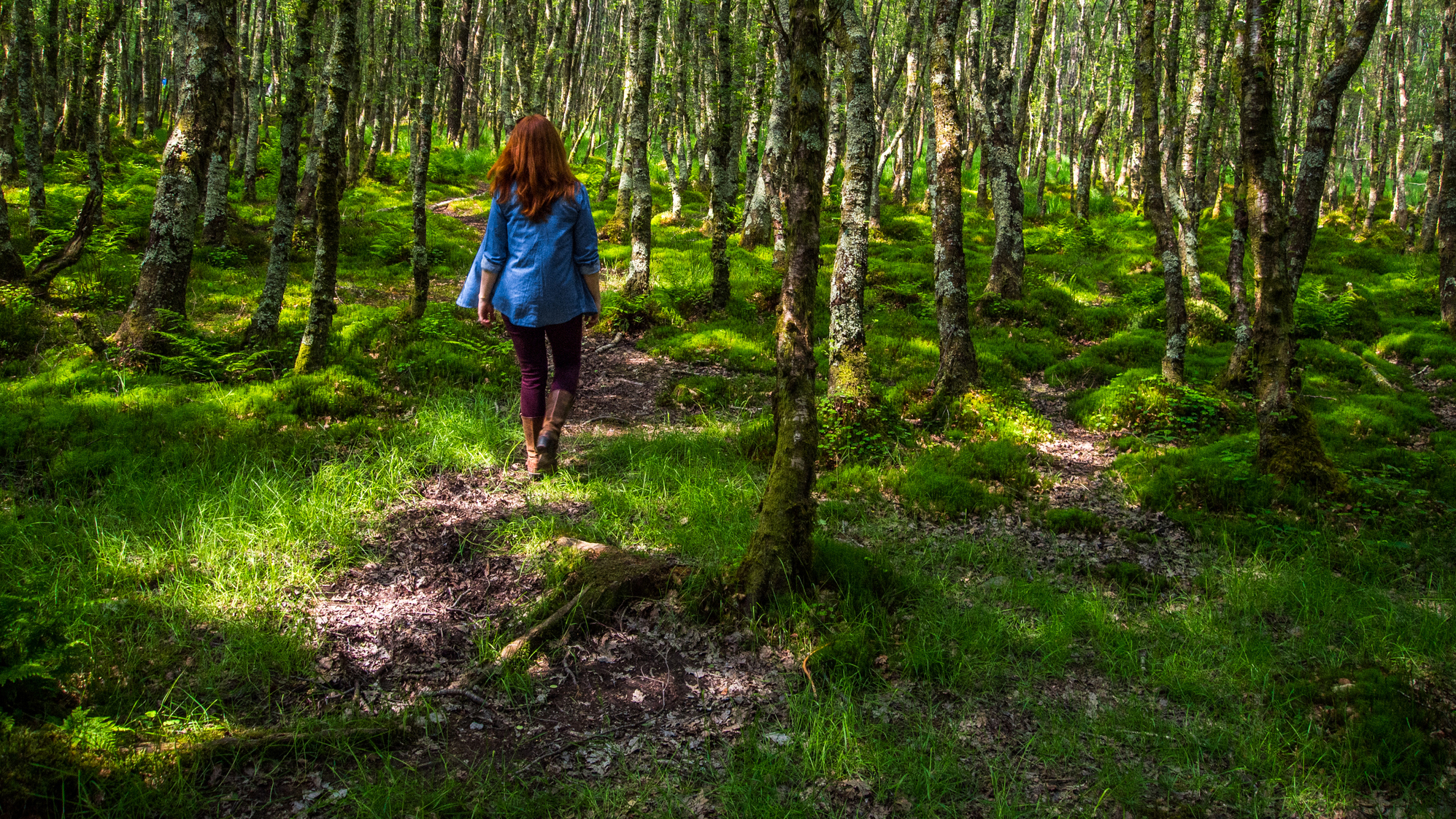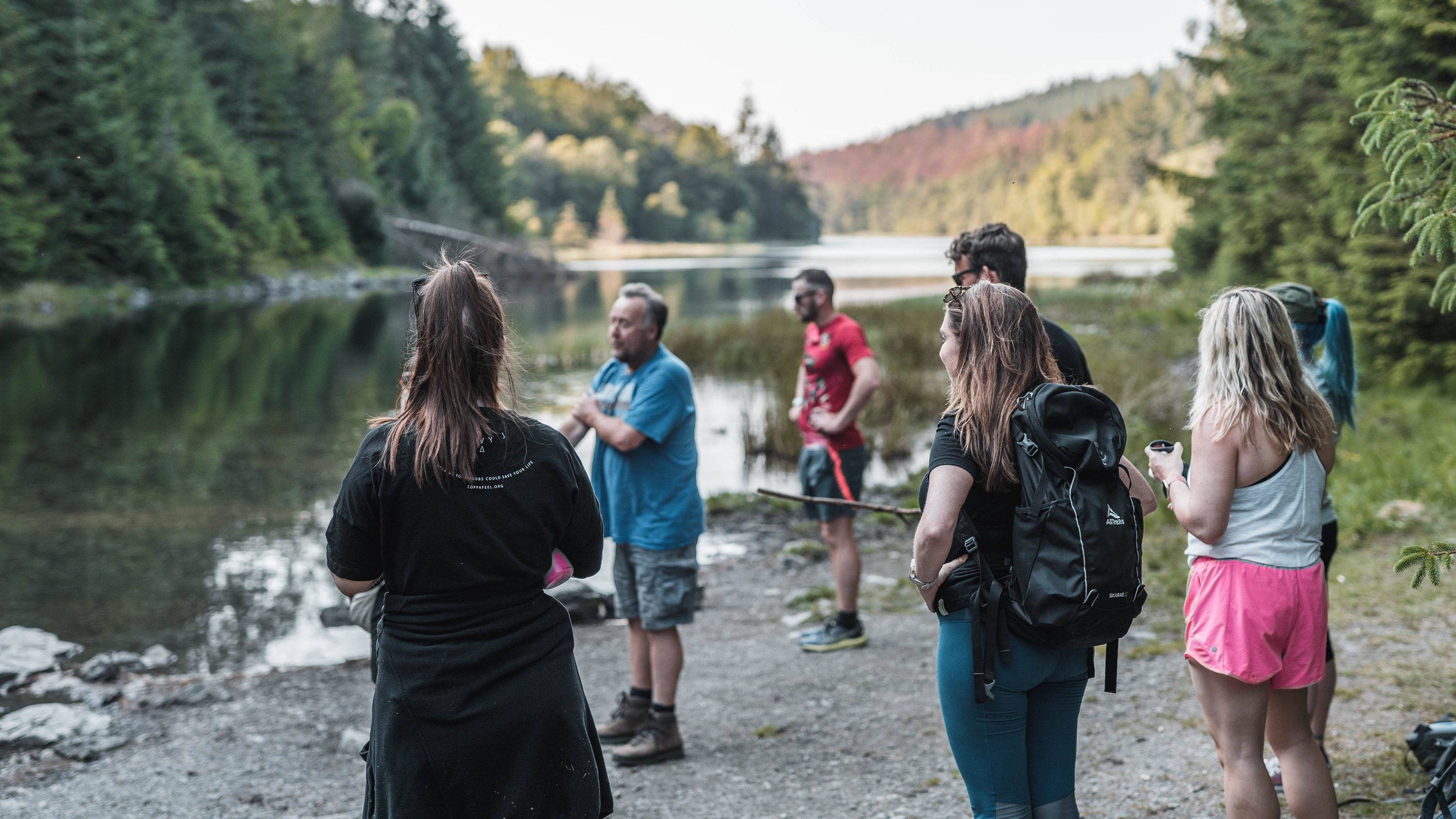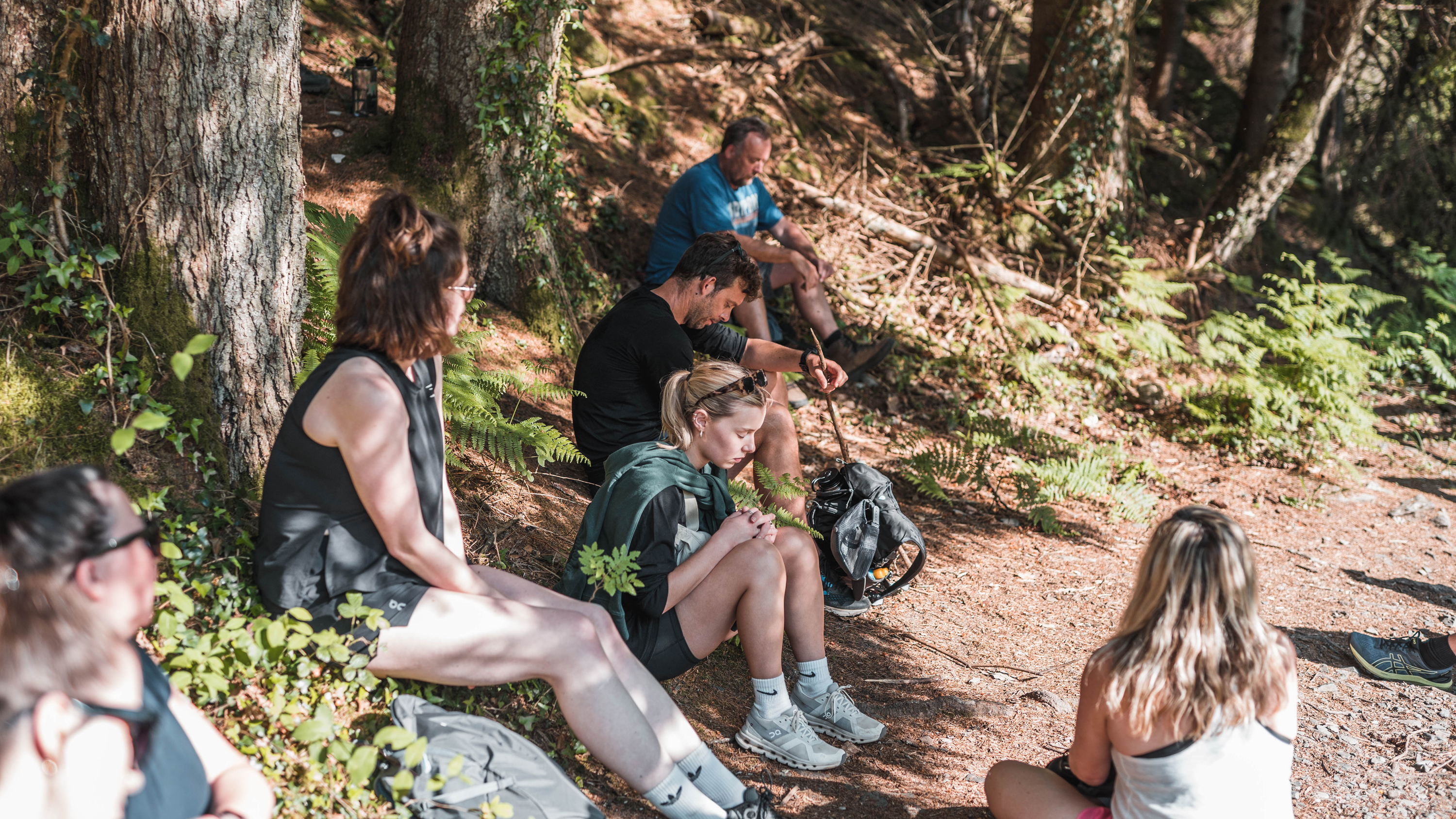
I’m a keen hiker and have dabbled with meditation but I’d never thought about pairing the two. So when the opportunity came to refresh my understanding of how to meditate, while taking a stroll with AllTrails in Wales, I jumped at the chance.
I’ve hiked many times and I usually use it as an opportunity to catch up with friends or talk to new people. Even when I'm on my own I like to listen to music or a podcast, and my phone is never far from me.
However, this guided hike was going to be different; I was going to have to force myself to disconnect from the world for an hour and try to appreciate my surroundings, while also working in some short moments of meditation.

What is walking meditation?
“Walking meditation combines the physical act of walking or hiking with meditative awareness. It involves directing your attention to your feet, body and the ground beneath you, focusing on the sensations of each step and staying present in the rhythmic movement of walking,” says Dr Suzanne Hackenmiller, the chief medical advisor at AllTrails.
The practice has become popular recently, but it actually has a very long history, with roots in contemplative traditions like Buddhism.
"In some practices, it’s done in a back-and-forth pattern for a certain number of steps in each direction, but it can also be done while walking or hiking down a trail," Hackenmiller adds.
For my guided walk, I hiked for 3km in a (mostly silent) group and stopped several times to appreciate my surroundings. Our hike leader also took us through several short meditations.
Here's what I noticed during my alfresco mindfulness session.

It calmed my mind
At first, I found it hard not to think about my to-do lists and what I had coming up, but the more I tuned out of my thoughts and noticed smells and sounds around me the more in the moment I was—and it gave me the head space to focus on my walk, rather than what was next.
The end of our walk also took us to a scenic vista. Normally, I'd stop to snap a picture on my phone, but at the end of the session it felt more satisfying to just appreciate the moment; I felt like I had better mental clarity.
Exercising in general has been shown to enhance cognitive function, while meditation can alleviate stress and anxiety. So it makes sense that combining these two activities would result in a better mental state.
It lowered my heart rate
Although the hiking increased my heart rate initially, after a few minutes of meditation it came down quickly, as the mental exercise stabilized my stress levels.
I'm not alone in this experience. Regular meditation can reduce heart rate, according to a 2015 study from Frontiers in Psychology, and it can also reduce the risk of strokes and heart attacks.
It improved my sleep
I sometimes struggle to get to sleep. After this session, I not only fell asleep quicker than usual, but my smartwatch told me that I had just over eight hours of sleep, with my sleep quality high—multiple hours in deep and REM sleep.
This is another benefit that's backed up by science, as regular exercise has been shown to improve sleep quality and decrease the amount of time it takes to fall asleep.
How to do a walking meditation
Choose a route that is relatively flat, such as one of these by AllTrails and where you’ll be undisturbed. According to Hackmiller: “Preferences for the ideal meditation hiking trail may vary, but as a general guideline, I’d recommend looking for routes that have secluded spots and rest areas along the way in tranquil and scenic settings.
“Select trails that align with your fitness levels and are of easy-to-moderate difficulty, to allow you to focus more on your meditation practice without excessive physical exertion.” Then pop your phone on silent and get curious about your surroundings.
Need some new sneakers for your next forest bathing session? Our guide to the best walking shoes can help







